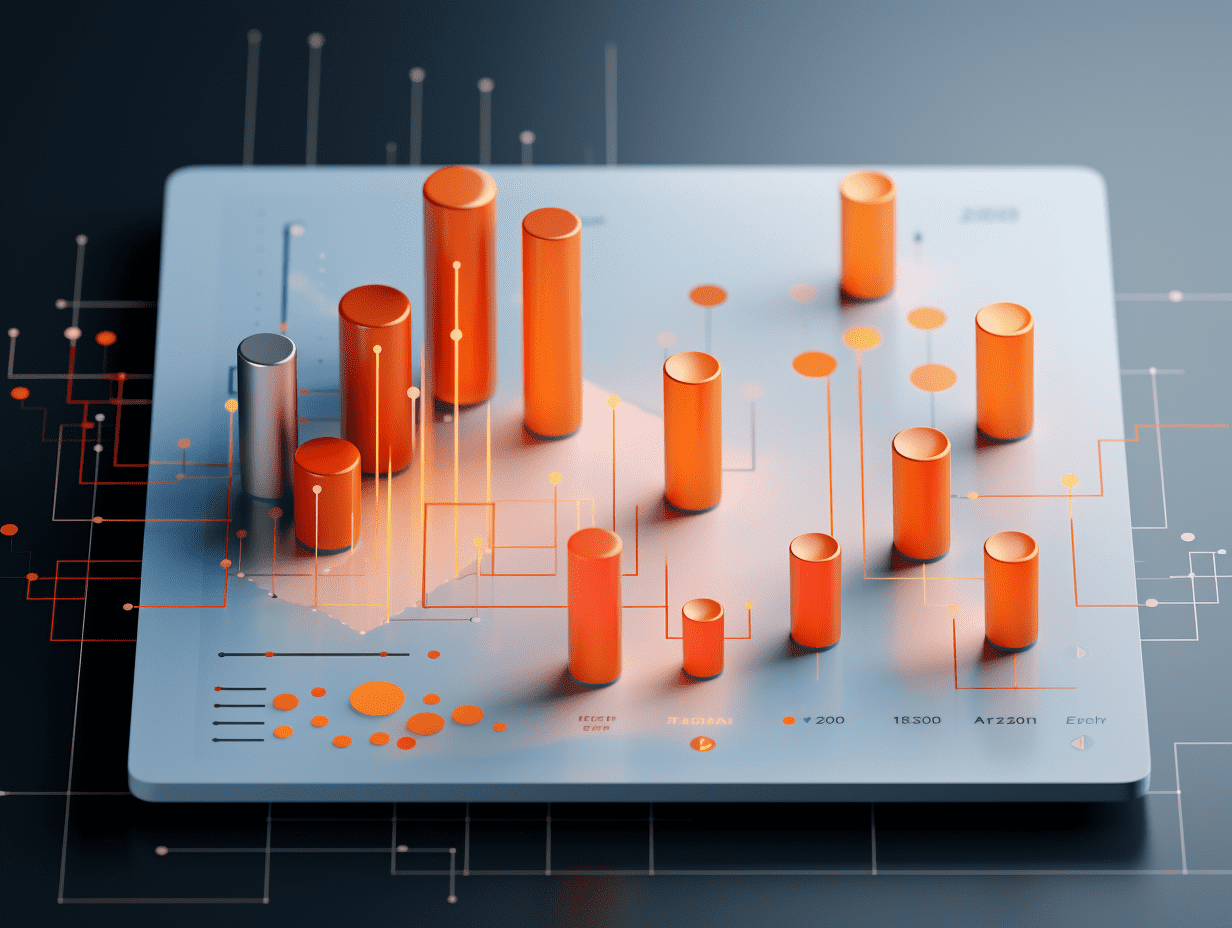Profit is king, AI leads the way! The heavyweight US stock earnings season kicks off, and Wall Street is increasingly convinced of the "long-term bull market narrative".
Are tariffs and government shutdown just noise? The strong performance expectations of the seven giants + AI computing power industry chain continue to drive, and the momentum of the US stock market hitting new highs is far from over. An indicator tracked by Yardeni Research shows that the net upward revision amplitude relative to the overall estimated changes has reached the highest level in four years.
Amid growing concerns about the global macroeconomic instability under factors such as the US government shutdown and the debt crisis in developed countries dominating the market, and the dominant position of massive investments in artificial intelligence potentially masking underlying deep-seated issues in the US economy, Wall Street analysts are becoming more optimistic about the profit outlook for US companies. Furthermore, with the positive momentum of performance exceeding expectations so far this year expected to continue, the bullish trend of record highs in the US stock market may remain hot in the long term.
As President Trump's tariff policies towards China face major uncertainties once again, along with the US government shutdown and the escalating debt crisis in developed countries, the performance disclosure season for US stocks appears crucial. Based on the latest expectations and disclosed performances by Wall Street analysts, the "Magnificent Seven" high-weight "Seven Tech Giants" on the S&P 500 index and industry leaders in the AI computing power chain such as Broadcom Inc., AMD, are expected to deliver strong performances, driving the ongoing trend of record highs in the US stock market.
Currently, "corporate profits rather than macroeconomics" occupy a core influence in pricing in global stock markets, with a rising confidence among Wall Street analysts in the profitability of US companies. Especially for the tech giants and leaders in the AI computing power chain driving this round of bull market in US stocks ("Magnificent Seven" and Broadcom Inc., AMD, Taiwan Semiconductor Manufacturing Co., Ltd. Sponsored ADR, etc.), which are still at the intersection of active upward revisions and exceeding expectations, providing a strong "fundamental earning drive" for the US stock market and even major global benchmark stock indices to continue reaching record highs.
Wall Street analysts growing increasingly confident in corporate profit strength
Analysts at Goldman Sachs Group, Inc. emphasize that this wave of AI investment frenzy is still in its "early stages", mainly driven by the actual productivity and operational efficiency improvements that AI application software like ChatGPT, Claude, etc., has brought in enterprise deployment scenarios (such as just starting to deploy AI within institutions like Goldman Sachs Group, Inc). To achieve these improvements, an immensely vast AI computing power infrastructure is necessary.
Since 2023, the unprecedented AI investment frenzy-driven long-term bull market in AI computing power narrative, where the "Seven Tech Giants" with high weights on the US stock market and the increasing weight of technology stocks globally achieve record highs, is the core logic for the ongoing uptrend in the global stock market driven by AI. Based on various core trend indicators and the performance and news flow around the AI bull market, the AI-driven bull market in the global stock market seems not yet completed.
Wall Street analysts have been busy in recent months in raising profit expectations for US companies, especially for leaders in AI computing power and tech giants. This has led to a measure of "net upward revisions of total earnings expectations" tracked by Yardeni Research rising to its highest level in four years. The net earnings revision index (NERI) of the S&P 500 index rose by 0.6 percentage points in October, continuing its sharp upward trend for the fifth consecutive month since hitting -7.8% (the 28-month low) in May.
Yardeni Research's latest reading overall reflects the continued warming optimism among Wall Street analysts regarding earnings growth, with continuous positive valuesmeaning the percentage of upward revisions exceeding downward revisions over the past three monthsindicating a bullish market sentiment. The NERI turned positive in August for the first time in nearly a year, signaling analysts' increasing confidence in profit growth momentum for US companies, especially in the tech sector.
The speed and extent of NERI's rebound have been particularly remarkable. The five-month surge since May marks the greatest improvement in NERI since December 2020, positioning it among the top 3% of comparably impressive trends since 1985. Historically, after such rapid reversals, there is typically at least a 12-month period of positive earnings revisions, often supporting further upward trajectories in the stock market.
The AI wave is unstoppable, and the long-term bull market in US stocks is ongoing
"The profits in the next few quarters might achieve double-digit growthprimarily contributed by tech giants, laying a solid fundamental basis for the market," said Jeffrey Buchbinder, Chief Equity Strategist at LPL Financial Holdings. "Stimulus policy-boosted economic growth expectations, the unprecedented AI infrastructure construction and application frenzy driving profit growth, along with the Fed's rate cut expectations, should allow this bull market to continue for quite some time."
It is under the epic rise in stock prices of tech giants such as NVIDIA Corporation, Meta, Alphabet Inc. Class C, Oracle Corporation, Taiwan Semiconductor Manufacturing Co., Ltd. Sponsored ADR, and Broadcom Inc., as well as the strong performance since the beginning of the year, that an unprecedented AI investment frenzy has swept through the US stock market and global stock market, leading to substantial gains in the S&P 500 index and global benchmark indices such as the MSCI Global Index since April, continually setting new historical highs.
The recent surge in prices of high-performance storage products in global DRAM and NAND series, coupled with the cloud computing giant Oracle Corporation's announcement of a contract backlog of $455 billion recently far exceeding market expectations, and the global valuation of over $1 trillion for the AI infrastructure deal by the leading AI startup company OpenAI, have significantly strengthened the "long-term bull market narrative" for AI GPU, ASIC, HBM, data center SSD storage systems, liquid cooling systems, core power equipment, and other AI computing power infrastructure sectors. The demand for AI computing power brought by generative AI applications and AI agents dominating the inference end is vast, likely to drive exponential growth in the artificial intelligence computing power infrastructure market. "AI inference systems" are also considered by Jung Rin-hun to be the largest revenue source for NVIDIA Corporation in the future.
Yardeni Research's compilation of indicators does not take absolute growth expectations into consideration. Based on the data compiled by Wall Street analysts, the profit growth forecast for the S&P 500 index in the third quarter is expected to slow down from nearly 14% in the first quarter to a still robust 7.2%. Concerningly, five of the 11 sectors of the S&P 500 index are anticipated to experience profit contractions, but the tech sector's high growth estimate of 21% is a strong support for the overall data, dominated by the "Seven Tech Giants" and leaders in the AI computing power infrastructure.
However, Yardeni Research's compiled NERI metric brings some comfort. Wall Street analysts are significantly raising profit expectations for the entire market, with seven out of 11 sectors having more upward revisions than downward revisions. According to Yardeni Research's data, this is the highest number since August 2024, surpassing the five sectors in August. The technology, financial, telecommunication services, and healthcare sectors are leading the way, with NERI readings of 12.4%, 11.4%, 11.2%, and 5.6% respectively.
Thus far, this optimism seems very reasonable. According to the latest data compiled by institutions, about 82% of publicly traded US companies that have disclosed their performance since the start of earnings season have exceeded Wall Street's expectationsslightly better than the long-term average. Wall Street's largest commercial banks generally outperformed expectations, with strong profit growth driving JPMorgan Chase (JPM.US), Goldman Sachs Group, Inc. (GS.US), Bank of America Corp (BAC.US), and Morgan Stanley (MS.US).
The bullish camp on Wall Street believes the S&P 500 index will continue to rise during the new round of earnings seasons, supported by historical data: Deutsche Bank Aktiengesellschaft's statistics indicate that historically, the S&P 500 index has risen as high as 75% of the time during earnings seasons, with a median gain of 2%.
"This is an absolute bullish signal for the stock market," said Ed Yardeni, Chief Investment Officer and Founder of Yardeni Research. "When Wall Street analysts overall are raising earnings expectations, it often provides strong support for the market's bullish atmosphere."
Binky Chadha, a stock market analyst from Deutsche Bank Aktiengesellschaft, recently raised the bank's year-end target for the S&P 500 index to 7,000 points. Peers at Bank of America Corp, Barclays PLC Sponsored ADR, and Wells Fargo & Company have also raised their forecasts, with expectations widely for the S&P 500 index to rise to 7,000 points by the end of the year or early next year. As of Thursday's stock market close, the S&P 500 index closed at 6,629 points.
Julian Emanuel, an analyst from the well-known Wall Street firm Evercore ISI, predicts that by the end of 2026, the S&P 500 index will rise to 7,750 points under the transformational era of artificial intelligence (AI) technology, described as "once-in-a-generation". The expected potential increase is around 20%.
Overall, Emanuel's long-term outlook is more optimistic, emphasizing that the proliferation of AI will drive a dual increase in corporate profits and valuations. Emanuel believes that in this process, pullbacks of 10% or more in the S&P 500 index are possible, but in a structural bull market background, such corrections are considered buying opportunities. This analyst's prediction for the bull market scenario for US stocks is more aggressive: Emanuel forecasts that in the event of an "AI-driven asset bubble", the S&P 500 index might even climb to 9,000 points.
Related Articles

The delinquency rate of car loans in the United States has soared by 50%! Previously the safest loans have now become a "high-risk area".

Echo of crisis: US regional banks hit hard again, market reenacting Silicon Valley bank panic script?

Global metal traders welcome a record profit year, Cargill and Trafigura's performance leads the industry into a frenzy.
The delinquency rate of car loans in the United States has soared by 50%! Previously the safest loans have now become a "high-risk area".

Echo of crisis: US regional banks hit hard again, market reenacting Silicon Valley bank panic script?

Global metal traders welcome a record profit year, Cargill and Trafigura's performance leads the industry into a frenzy.

RECOMMEND





